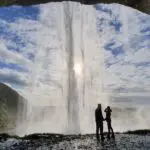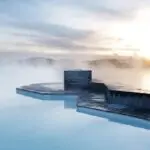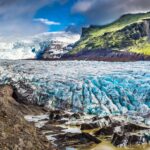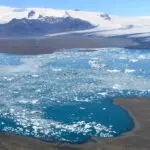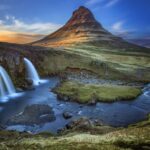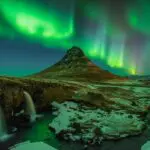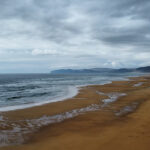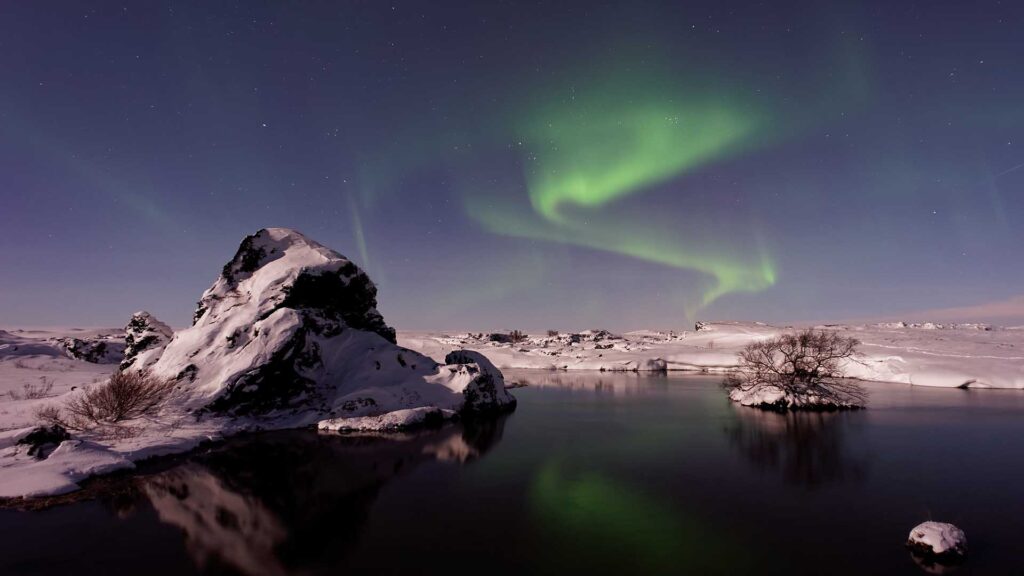
Most travellers look forward to seeing the wondrous Northern Lights in Iceland. Science calls them the Aurora Borealis when the sky glows with greens, blues, and sometimes reds, which look glorious against our wide-open skies and rugged landscapes. Perfect Instagram magic! But this isn’t magic. It is the universe at work, and we get to enjoy the brilliance here in Iceland and worldwide.
Your Friend in Reykjavik wants you to know a little about what makes these fantastic light shows and the best conditions to witness one (or hopefully more!).
What in the world are the Northern Lights?
So, let’s get the science stuff out of the way. The show begins a few days earlier when the sun emits a cloud of gas particles, a solar flare. Kind of like a burp. These particles take about two or three days to reach Earth and hit the magnetic field protecting our planet from solar winds. Usually, we don’t see the magnetic field in action against solar winds, but these flares are more intense. These particles are pulled to the magnetic poles and collide with the gases in our atmosphere. Et voila — lights! Those appearing by the South Pole are called Aurora Australis. And by the North Pole, Aurora Borealis, or the Northern Lights that we enjoy in Iceland! If you want to learn about the myths and legends connected to this fascinating phenomenon, check out our blog, Myths and Legends of the Northern Lights.
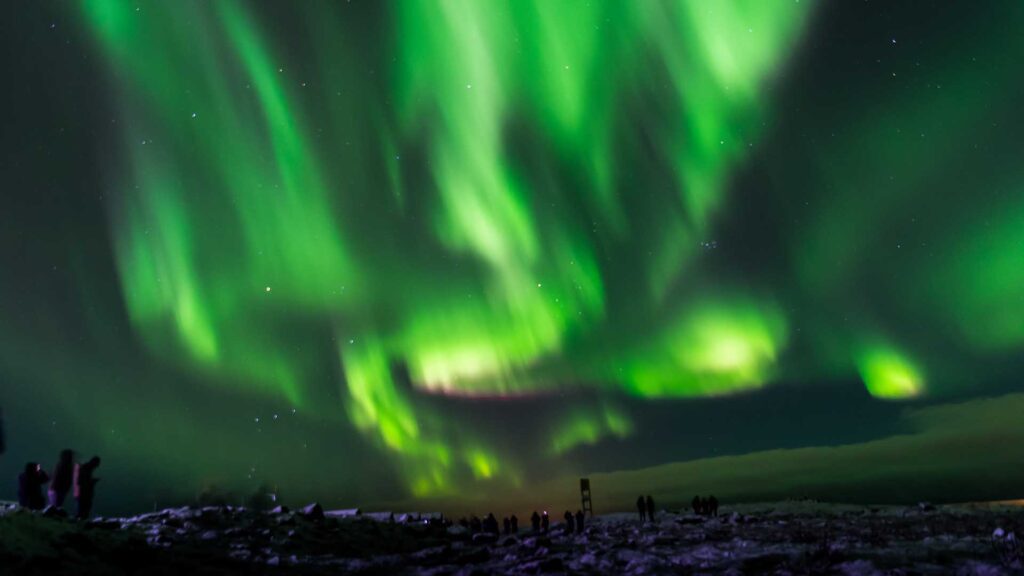
Are Northern Lights usually shades of green?
A few factors contribute to the colours and patterns we see. Oxygen helps create greens and reds, and nitrogen makes blues and purples. How high up these collisions happen also impacts colours. Close at about 60 miles are blues and purples. Next up to 150 miles are greens. Then, reds at heights higher than that. And because our magnetic field is not just a circle around the planet but more like a multi-layered bullet, the lights refract in different patterns depending on how they hit it. We’ve seen flowing curtains, pulsing orbs, and a constant, colourful glow!
Can the Northern Lights be seen only at night?
Technically, the Northern Lights are happening all the time, but the sun’s rays during daylight make them difficult to see. So, we need a night sky to witness this wonder. And, believe it or not, sometimes you can see these lights closer to the equator. In 1989, a monster solar storm caused the auroras to extend to Mexico. But of course, the ideal place to see the Northern Lights is closer to the North Pole. Like when you visit Iceland!
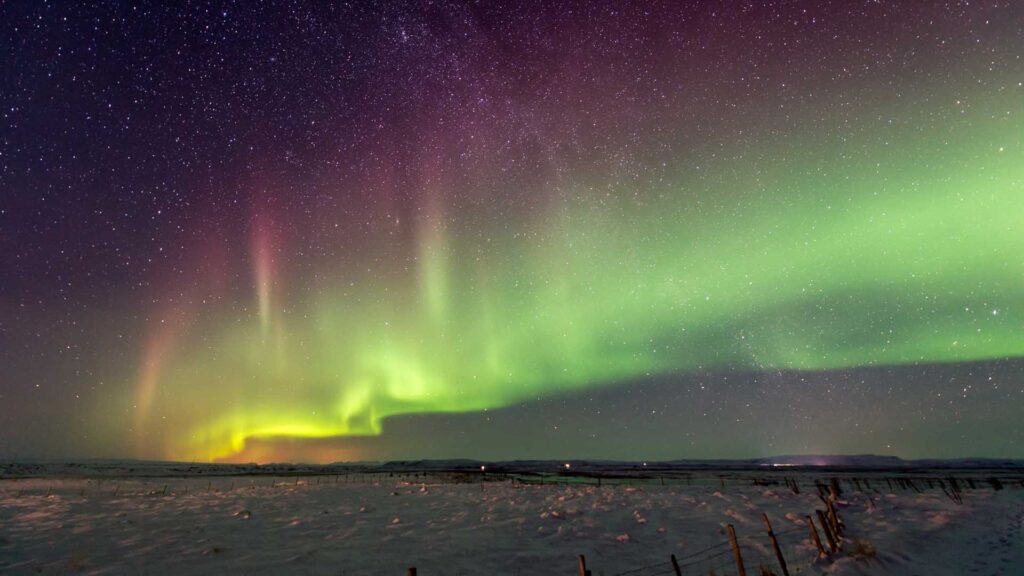
How to Photograph the Northern Lights?
As you can see from the photographs in this blog post, it is possible to photograph the Northern Lights. However, to get the best result, you must have a camera in which you can change the aperture, ISO and shutter speed. You will most likely be able to photograph the lights with a high-end phone, as the phone cameras have become very good. One other addition which is pretty much essential is a tripod.
With a digital camera:
- Use an aperture of f/2.8 or the widest in your lens
- Adjust an ISO from 3200 to 6400
- Set a shutter speed between 1-15 seconds
- Adjust your white balance to 3500k
- Focus manually on a distant light
- Set the general camera settings for the Northern Lights.
- Select a shutter delay of 2 seconds
- Check your Northern Lights shot histogram.
With a phone:
- Manual mode: You need to use your phone’s manual mode.
- Aperture size: The lower the aperture size, the better to photograph the Northern Lights. You have a higher chance of capturing them with a lower f/ value.
- Resolution: Your phone has to be more than 12 megapixels to have a good chance of photographing the Northern Lights. But you also need to check your micron/µm as it will give you better quality when taking photos in low-light conditions. To choose the best µm is to have a bigger value. A higher pixel value will give a better picture in low light conditions with less noise.
When is the best time to see the Northern Lights in Iceland?
As we said, the Northern Lights are best seen at night. So, visiting Iceland during the more wintry months, from mid-August to mid-April, would be ideal when we get dark nights. But there are other things to consider. We also need clear skies to enjoy the light show fully, and unfortunately, our weather can be cloudy and snowy during the winter. The autumn equinox is an ideal time to see the Northern Lights, which is why visiting Iceland in September is terrific, too!
Your Friend in Reykjavik wants to share the Northern Lights with you!
Your Friend in Reykjavik is here to help you enjoy the Northern Lights and all the other amazing things you can experience in Iceland. And while we can’t guarantee you’ll see the Northern Lights every night of your visit here, we can guarantee we’ll do our best to ensure your Iceland stay is memorable and full of fabulous pics! Contact us today to learn more about the best time to catch the Northern Lights or learn about our Reykjavik walking tours! Many different Northern Lights tours are available, so we’re sure you will find one that suits you. We highly recommend getting one of our combo tours, Reykjavik Food Walk and Northern Lights by boat.
Please sign up HERE for our newsletter for more fun facts and information about Iceland!

